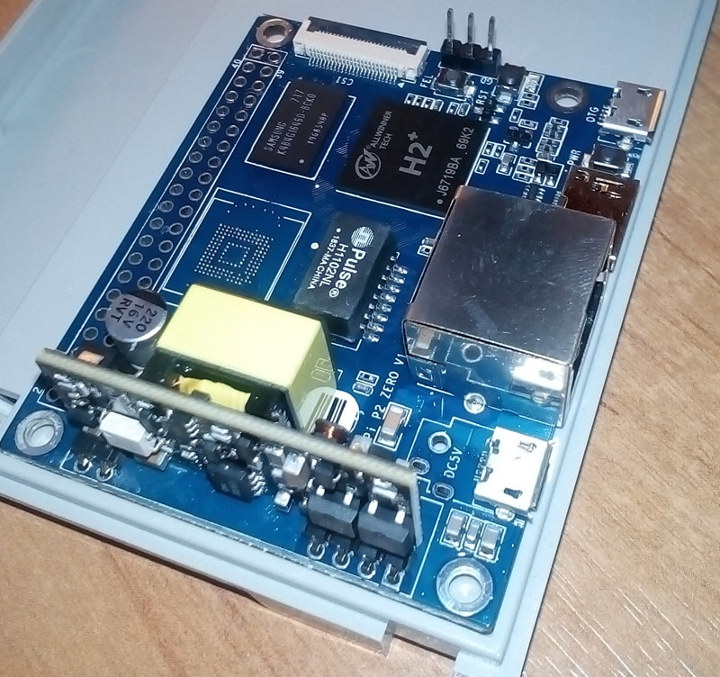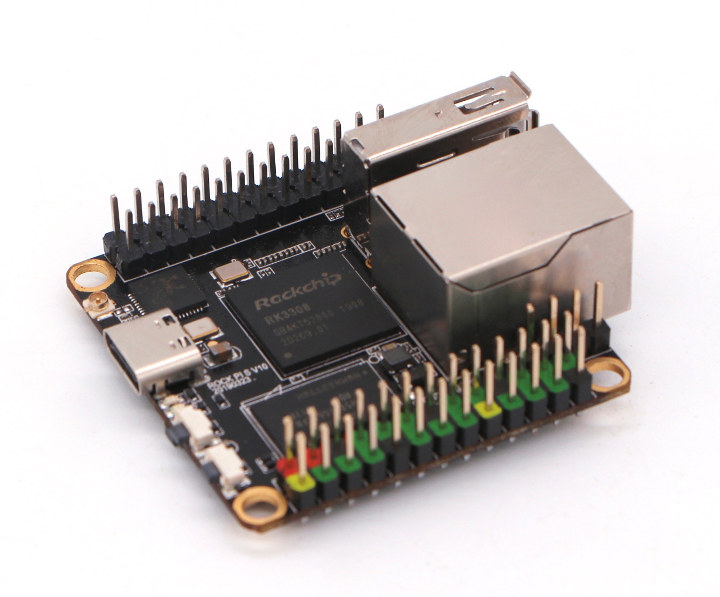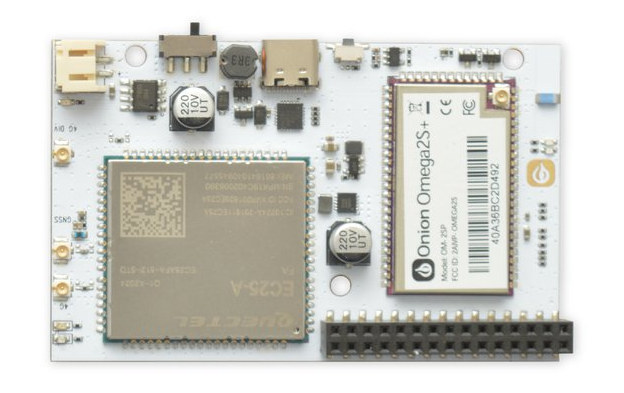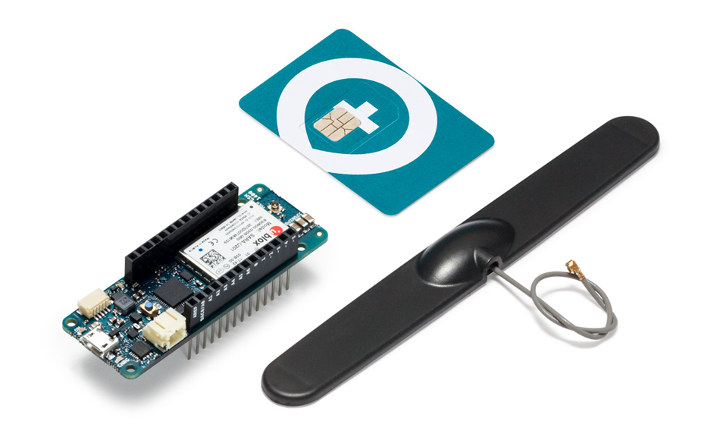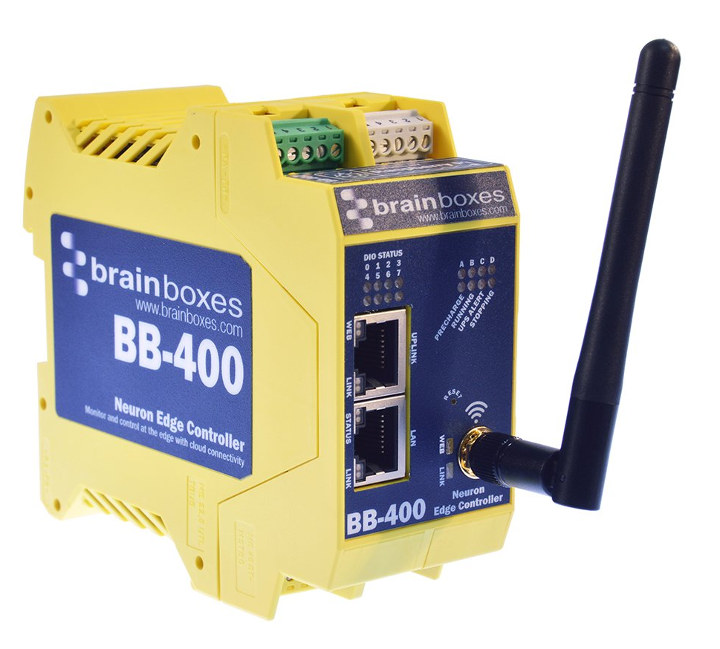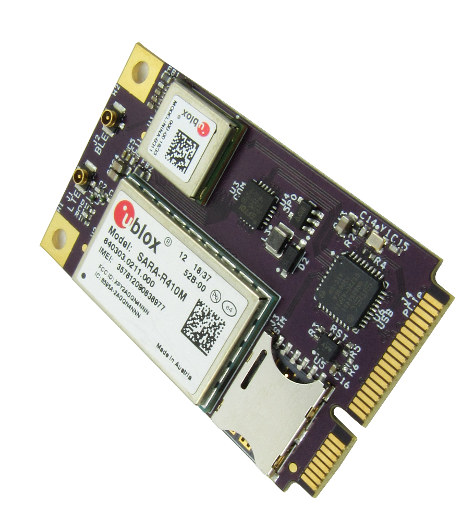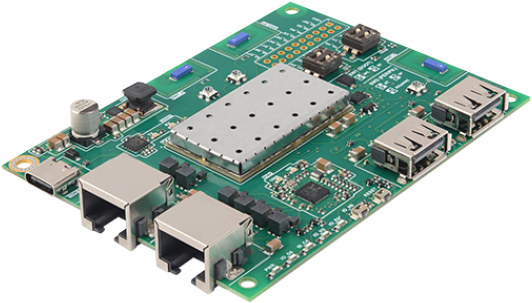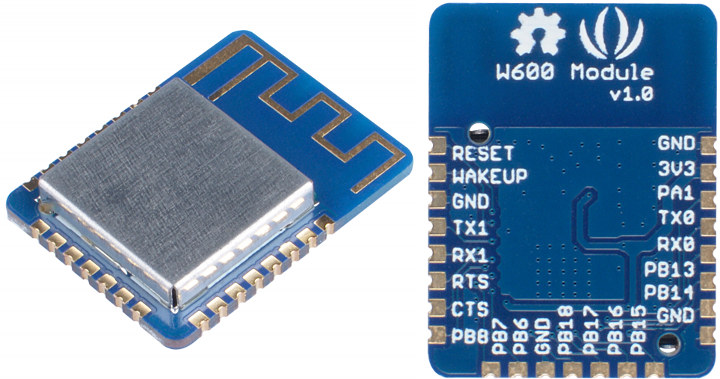Last year SinoVoIP introduced Banana BPI-P2 Zero board powered by Allwinner H2+ processor with 512MB, 10/100M Ethernet with Power-over-Ethernet, WiFi & Bluetooth, a mini HDMI port, and an 8 GB eMMC flash. They also launched a lower cost version without eMMC flash nor wireless module for $16, and the optional PoE module going for $6 extra. The company is now selling the board at a promotional price of $13 without PoE, and $19 with RT9600 POE module. The shipping fee is not included in those prices however, and in my case, the prices end up at respectively about $25 and $31 with shipping. Banana Pi BPI-P2 Maker specifications: SoC – Allwinner H2+ quad-core Arm Cortex A7 processor with Mali-400MP GPU. System Memory – 512MB DDR3 SDRAM. Storage – microSD card slot Video Output – mini HDMI port Connectivity – 10/100M Ethernet with optional PoE support Camera I/F – Parallel CSI […]
$9.9 ROCK Pi S is a Tiny SBC Powered by Rockchip RK3308 Processor
Radxa launched their low cost ($40) Rock Pi 4 SBC powered by Rockchip RK3399 processor a little over 18 months ago. If you are subscribed to their mailing list, the company has now sent an email entitled “ROCK Pi Summer Updates 2019” (no link available) that reports about v1.4 of the board with 4MB SPI flash onboard, an external WiFi antenna connector, and various other small changes, as well as the announcement of RockPi PoE HAT to power the board from an Ethernet cable, and an USB 3.0 eMMC card reader. But what particularly caught my attention in the email was a new tiny single board computer powered by Rockchip RK3308 Cortex-A35 processor: Rock Pi S selling for as low as $9.9 with 256MB RAM, and targetting headless IoT & smart voice applications. Rock Pi S board specifications: SoC – Rockchip RK3308 quad-core Arm Cortex-A35 processor with built-in VAD (Voice […]
Onion Omega2 LTE Board Combines WiFi, 4G LTE and GNSS Connectivity (Crowdfunding)
Onion has launched several compact OpenWrt WiFi boards for IoT projects over the years starting with their Onion Omega board in 2015, and the latest so far being Onion Omega2 Pro with a massive 8GB storage. The company has now launched a new model with 4G LTE connectivity called Onion Omega2 LTE, based on Omega2S+ module, and also featuring GNSS global satellite positioning capability. Onion Omega2 LTE specifications: WiFi Module – Onion Omega2S+ IoT computer module with MediaTek MT7688 MIPS CPU @ 580 MHz, 128 MB RAM, 32 MB storage Cellular and GNS Module – Quectel EC25 LTE Cat 4 modem that delivers 150 Mbps downlink and 50 Mbps uplink data rates, provided either for North America or global markets External Storage – MicroSD card slot up to 2 TB (once such cards become available…) Connectivity 2.4 GHz 802.11 b/g/n Wi-Fi 4 + onboard 2 dBi direction chip antenna & […]
Arduino SIM for Arduino IoT Cloud Includes 10 MB of Free Data
I’ve been using Hologram developer SIM card for cellular IoT hardware reviews since it’s really great for evaluation as the company offers 1MB of data for free monthly. It’s supposed to work worldwide, but recently I discovered that while 3G worked fine in Thailand, the card would not support NB-IoT just yet. More companies are now offering this type of global cellular IoT SIM cards such as Twilio or SORACOM, and Arduino is now joining the fray by offering the Arduino SIM card specifically designed to connect to Arduino IoT cloud. The Arduino SIM card currently works with Arduino MKR GSM 1400 board only, and Arm Pelion Connectivity Management provides the cellular service with a global roaming profile than enables connectivity in over 100 countries at a low cost. The first 90 days are actually free if you use less than 10MB of data, after which the price is 5MB […]
BB-400 Neuron Edge Dual Ethernet Industrial Controller Combines Raspberry Pi CM3+ and Arduino MCU
While the Raspberry Pi boards are mostly promoted as tools to teach STEM to kids and adults alike, they have found their way in a fair amount of industrial products, including ModBerry M500 industrial computer, Janz Tec emPC-A/RPI3 industrial embedded controller, and Kunbus RevolutionPi RevPi Core among others. There’s yet another option with Brainboxes BB-400 Neuron Edge industrial controller that was announced last year with Raspberry Pi Compute Module 3, but recently got an upgrade to Raspberry Pi Compute Module 3+. The controller features two Ethernet ports and also includes an Arduino compatible microcontroller to control the system’s eight configurable digital inputs and outputs. BB-400 Neuron Edge industrial controller specifications: SoM – Raspberry Pi Compute Module 3+ with Broadcom BCM2837B0 quad-core , Cortex-A53 processor @ 1.2GHz, 1 GB LPDDR2, 32GB eMMC Flash storage MCU – Unnamed Microchip Atmel Arduino compatible microcontroller Connectivity Ethernet Uplink Port – 1x RJ45 jack, 10/100Mbps […]
Gateworks Introduces GW16126 Mini-PCIe Cat M1 Modem and Bluetooth LE Radio
Gateworks has launched another mini PCIe card providing IoT connectivity for their NXP i.MX 6 and Cavium Octeon TX powered SBC’s. Last month we covered GW16130 Mini PCIe satellite modem, and the company has now announced GW16126 mini PCIe card with a Cat M1 (eMTC) modem and a Bluetooth Low Energy radio for the US market, and other regions or countries where LTE Cat M1 networks have been deployed. Gateworks GW16126 mini PCIe card specifications: LTE Cat M1 Module – U-blox SARA-R410M-52 LTE CAT M1 cellular modem with up to 375 kb/s upload and 300 kb/s download; LTE Bands 2,4,5,12,13 SIM card – nano-SIM socket with hologram starter SIM included with free 1MB/month starter plan included BLE module – u-blox NINA-B301 Open CPU Bluetooth 5.0 Low Energy Radio based on Nordic Semiconductor nRF52840 chipset, Zephyr RTOS with Bluetooth HCI UART Host Interface. BLE Rates up to 2Mbps Antennas – 2x […]
Komikan is a Realtek WiFi 802.11ac Wave2 Module & Development Kit
8devices has been developping and selling WiFi modules such as their Rambutan Atheros module, and the now-discontinued Carambola module. The company is now back with Komikan, an 802.11ac Wave 2 + Bluetooth 4.1 module, as well as the corresponding Komikan development kit. Komikan 802.11ac Wave 2 Module Specifications: CPU – Realtek RTL8197FS MIPS 24Kc processor @ 1 GHz System Memory – 128 MB RAM Storage – 32MB flash Connectivity WiFi 4 802.11 b/g/n 2×2 MIMO via RTL8197FS WiFi 5 802.11ac Wave 2 2×2 MIMO via Realtek RTL8822BEH Bluetooth v2.1/3.0/4.1 Max output power – 22 dBm per chain Antenna – GPIO pins for external antenna Expansion via bottom pads – 44x GPIO, 2x USB, 4x UART (one for BT), RGMII, 2x SPI, PWM, MDIO, eMMC, JTAG, 2x I2S, PCM, 2x I2C, P-NAND Power supply – 3.3V, max power consumption 6W Dimensions – 37.5 x 21.3 mm The two integrated radios (2.4 […]
Seeed Studio W600 Certified WiFi Module to Support Arduino, Micropython
Last year, Seeed Studio introduced Air602 WiFi module, a competitor to ESP8266 based on Winner Micro W600 Arm Cortex-M3 microcontroller and selling for $1.90. The module was clearly optimized for cost and size since it offered only a few I/Os, and there was absolutely no mention about FCC or CE certifications. The company has now launched another W600 module, slightly larger to expose more I/Os, and pre-certified to comply with FCC and CE requirements. W600 certified WiFi module is offered standalone, or fitted to “Grove – W600” module for easy connection to Arduino boards. W600 Module Specifications: WiSoC – Winner Micro W600 Arm Cortex-M3 microcontroller with 1MB Flash, RF Transceiver, CMOS PA, BaseBand WiFi Connectivity – 802.11 b/g/n up to 150 Mbps Frequency – 2.4~2.4835 GHz Features – Wi-Fi WMM, WMM-PS, WPA/WPA2, WPS Protocols – TCP, UDP, ICMP, DHCP, DNS, HTTP Access Point and Station modes PCB antenna Expansion – […]


